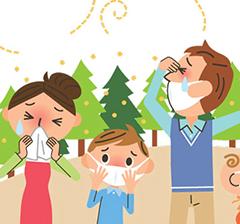Particulate Matter
We’ve all seen dirty bathrooms with black mold growing on its surfaces, or cars covered in a yellow blanket of pollen in the spring. These are visible sources of particulate matter.
Particulate matter can be found floating in the air we breathe — both indoors and outdoors.
Particulate matter is made up of tiny particles and liquid droplets that include:
- Chemicals
- Metals
- Dust
- Mold spores (spores are similar to tiny seeds you can’t see)
Where does particulate matter come from?
Particulate matter gets into the air by human activities such as cooking food on a charcoal or gas grill, or burning fossil fuels in a power plant.
How can particulate matter affect my health?
Breathing in these particles can cause health problems. The smaller ones can affect people directly by getting into the lungs and bloodstream. Many particles can trigger asthma and allergic reactions. Larger particles may cause irritation of the eyes, nose, and throat.
Some content courtesy of the National Library of Medicine.




